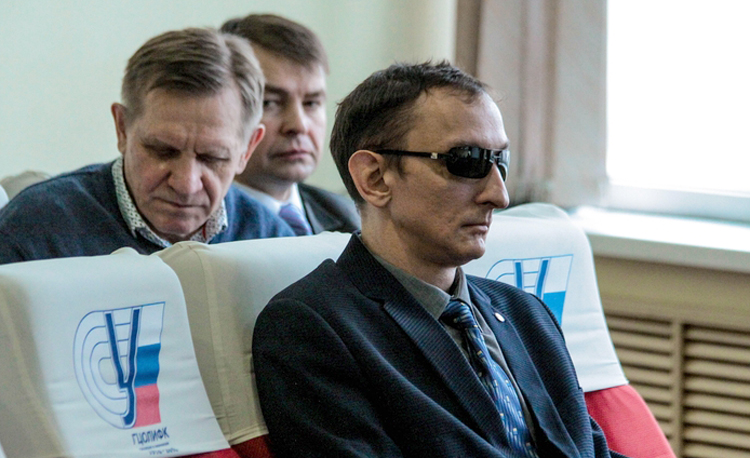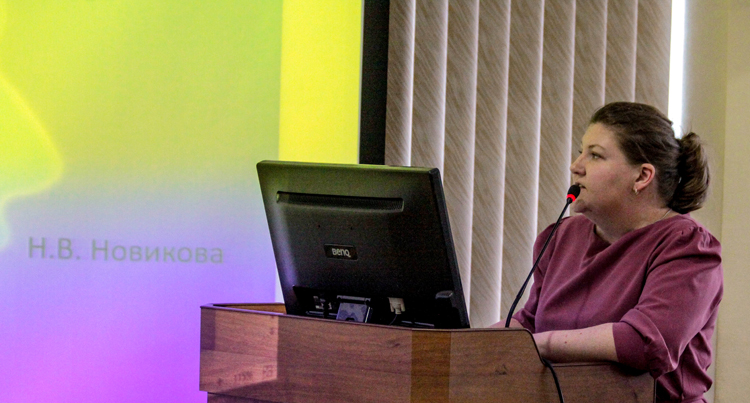- Home
- Press center
- Blogs
- SAMBO-For-The-Blind Research Results Announced at Research and Practical Conference
SAMBO-For-The-Blind Research Results Announced at Research and Practical Conference

On February 14, the 19th All-Russian Research and Practical Conference of Young Scholars with international participation entitled "Integration of Science and Sports Practice in Martial Arts" was held at the Russian State University of Physical Education, Sport, Youth, and Tourism. The conference was dedicated to the memory of the Honored Master of Sports of the USSR, coach and professor Yevgeny Mikhailovich Chumakov.

Natalya Novikova, a research and methodology expert of the "Overcoming - International Movement of SAMBO for the Blind" project, made a report at the conference. Roman Novikov, Member of the FIAS Commission on Athletes with Disabilities, commented on the report’s key statements.
“We presented the first results of the research funded by a grant from the President of the Russian Federation as part of the "Overcoming - International Movement of SAMBO for the Blind" project. According to the results of the research aimed at the balance maintaining specificity, blind sambists were found less able to keep their balance in the basic stance, and also much less stable when turning their heads than the visually impaired athletes and those with uniform residual vision. However, the balance of blind sambists was improving over time while staying in the basic standing position and, on average, after 30 seconds it was growing more stable in some cases than that among wrestlers with better uniform vision.
It should be noted that during a fight, a blind athlete receives information regarding the behavior of their opponent in large part due to tactile sensations. Therefore, they try to approach their opponents, by making extra oscillatory movements in order to determine the movements of the opponent’s body and second-guess their next actions, as well as figure out their position relative to the opponent. However, such actions on the part of the blind athletes make their position less stable, which makes it easier for their opponent to unbalance them and apply a certain technique.
Due to pressure on vestibular system, the balance of a blind sambist is significantly being reduced compared to athletes who use eyesight in similar conditions. The effect of this we observe in the course of competitive fights. When, according to the rules, an arbiter brings the contestants back to the initial collar and sleeve grip, the technical actions of a blind athlete prove much less effective than at the beginning of the bout.
Thus, in accordance with the functional capabilities, two groups of sambists stand out in SAMBO for the Blind: the first are the blind ranging from those totally lacking light perception to those displaying the presence of one thousandths from normal visual acuity and (or) with a significant FOV narrowing, and the second are the blind with better residual vision and high degree of hypovision. The results and conclusions obtained by the research will form the basis for the compilation of the SAMBO-for-the-Blind classification rules,” claimed Roman Novikov.
-
Did you see it? 29 MaySAMBO Without Borders: Friendly Encounter Between Tashkent and London Clubs Held in Uzbekistan
-
Did you see it? 11 April[VIDEO] The First SAMBO Athlete in Space - Oleg Artemyev. Documentary
-
Did you see it? 20 August[VIDEO] SAMBO competition among Indian schoolchildren held in Kerala
-
Competitions 25 JulySAMBO Athletes to Compete for a Unique Medal at The World Games 2025
-
Personalities 23 JulyRoman SHAKIROV: “Our goal is the first place at The World Games 2025”
-
Mass media 22 JulyThe World Games 2025 SAMBO Tournament to Stream Live
- Watch World Sambo Championships 2022. Bishkek, Kyrgyzstan 17 November 2022
-
Competitions 25 JulySAMBO Athletes to Compete for a Unique Medal at The World Games 2025
-
Personalities 23 JulyRoman SHAKIROV: “Our goal is the first place at The World Games 2025”
-
Mass media 22 JulyThe World Games 2025 SAMBO Tournament to Stream Live
